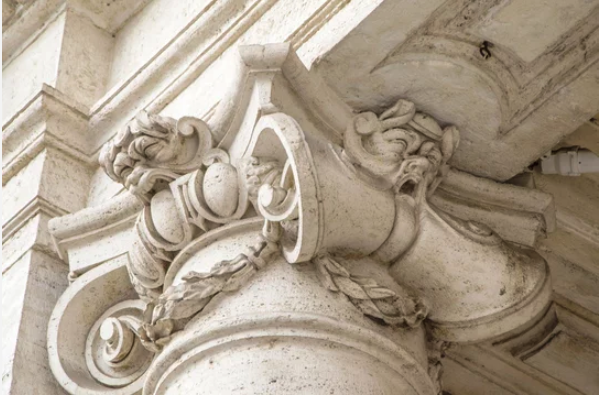Frank Denius
Wednesday, November 11, 2015 | 12:00pm | Main 212

Bio originally published by Texas Longhorn Athletics in May 2007. “Frank Denius: True hero and Longhorn” by Milton Carr
Franklin W. Denius spent his early childhood in Athens, Texas, where his family lived and where he attended public schools. As a young teenager, he went off to military prep school, Schreiner Institute in Kerrville. He graduated there in 1942 and then enrolled, as a member of the Army Program for 17 year olds, at the Citadel in Charleston, S.C. After two semesters he enlisted in the Army and entered active duty June 3, 1943. Pvt. Denius, after basic artillery training, was assigned to the 30th Infantry Division.
The 30th Infantry Division moved to port of embarkation, sailed from Boston harbor on February 11, 1944, and arrived in England on February 22, three months before the invasion landings in Normandy. Frank Denius was a fire control instrument operator assigned to a forward observer party in Battery C of the division’s 230th Field Artillery Battalion. The 230th Artillery was the first element of the division to be committed in the invasion. The battalion was called ashore to Omaha Beach, landed on D+1 (June 7), and immediately went into action providing fire support for the 29th Infantry Division that had made the initial assault landing against very heavy opposition the day prior.
Six days later, Frank’s unit was back with the 30th Infantry Division providing fire support for the 2nd Battalion, 120th Infantry Regiment. Then, on July 17, 1944, when his forward observer party was operating forward of the lines, the officer in charge was killed by enemy machine gun fire. While still subject to enemy fire and at great risk to his own life, 19-year-old Pvt. 1st Class Denius took over and called for, observed, and adjusted artillery fire that was essential to the advancing infantry in accomplishing the mission. He would later receive the Silver Star for his actions that day, and he would also be promoted to corporal and made chief of detail in charge of his forward observer party.
By July 24, a tremendous Allied force had been moved across the channel from England, but, still confined to limited space in Normandy, was poised near St.-LO for the beginning of “Operation Cobra,” the breakout across France. The 230th Artillery Battalion was among hundreds of units that were coiled up along the axis of advance just behind the front lines. Lt. Gen. Leslie J. McNair, Commander, United States Ground Forces, had come forward to observe the start of the operation and he was in the area of the 119th Infantry Regiment of the 30th Division when heavy bombers came over to deliver a preparatory strike against the German defenses. Many of the bombs fell short and more than 800 Americans were killed or wounded. Among the dead was Gen. McNair, the highest ranking Allied officer killed in WWII. Frank says, “I was only 75 yards from General McNair when he was killed.”
In Normandy two weeks later, Frank Denius was again supporting the 2nd Battalion, 120th Infantry when they moved into position at Mortain on August 6. Early the next day, the Germans launched a massive counteroffensive with 70,000 troops, determined to reach the sea and divide the Allied armies. Their attack started by sweeping west, through and past Mortain, towards Avranches and the coast. Hill 314 (some sources identify it as Hill 317) was the dominant terrain in the area and it lay astride the two main roads leading west out of Mortain. Approximately 700 men of the battalion and its attached units gathered there and consolidated their defense of Hill 314. For the next six days they would be cut off, surrounded, and repeatedly attacked until they were out of ammunition and nearly defenseless, except for one thing. From their vantage point, the observers — Frank Denius among them — could call fire missions wherever they could see the enemy and they could see from horizon to horizon. They dealt terrible destruction on the Germans and the counterattack to the sea failed because of it. Late on August 10, the Americans on the hill received an airdrop of supplies relieving the critical shortage of ammunition and rations. However, they were out of medical supplies and the untreated wounded were dying as a result. In one of the most unusual happenings of the war, the 230th Artillery emptied some of their base ejection projectiles and filled them with bandages, dressings, sulfanilamide and morphine syrettes. On the evening of August 10 and again on August 11, Frank Denius directed the shelling of his own position with the medical supply-filled rounds. At least some of the projectiles were recovered with serviceable contents intact, and those supplies were critically needed. Late in the morning of August 12, other 30th Infantry Division units reached Hill 314 and relieved the 376 survivors that were still able to walk away from the hill. One of those survivors was Frank Denius, who afterwards was decorated with a second award (first oak leaf cluster) of the Silver Star.
Later, in Belgium during the Battle of the Bulge, his forward observer party was again supporting the infantry battalion. On December 22, 1944, they found themselves in the path of a German Panzer attack. Their artillery observation post was discovered by the enemy and taken under fire by German tanks. Despite the fire that began to fall all around him, Sgt. Denius refused to withdraw from the post and continued “rendering artillery support” until the attack had been repulsed. Staff Sgt. Franklin W. Denius later received his third award (second oak leaf cluster) of the Silver Star. He was still a teenager at the time. Frank was wounded during the fighting in Normandy, wounded again during the Battle of the Bulge, and was awarded his second Purple Heart in February 1945. After serving with his unit in the Normandy, Northern France, Rhineland, Ardennes-Alsace, and Central Europe campaigns through to the end of the war in Europe, Frank Denius returned home with the 30th Infantry Division. He arrived in the United States on August 25, 1945, and proceeded home to Texas where he was discharged in San Antonio at Fort Sam Houston on October 2. A fourth Silver Star was awarded to Frank after the war was over in 1945.
After leaving the Army he enrolled at The University of Texas and he has made his home in Austin ever since. Frank graduated in 1949, a big year for him. He earned degrees in both business and law; was admitted to the State Bar of Texas; went to work for the Austin law firm of Looney, Clark and Moorhead; and became a director in the Cain Foundation (established by his uncle, Wofford Cain, a 1913 Texas A&M graduate and former A&M regent). That year, too, he married Charmaine Hooper who was also from Athens, Texas.
Now, more than 50 years later, he continues to practice law, he serves as director of the Southern Union Company and of JPMorgan/Chase Bank, and he is president of the Cain Foundation. In his decades of service, he has chaired or served as counsel or in other leadership positions, on many committees, councils and boards of corporations, of the city and state government, and of The University of Texas and Texas A&M University, all institutions he served with intense devotion.
But nowhere is his personal involvement more apparent than it is with University of Texas football. He goes to all the home games and most of the away games. He faithfully attends all the football practices as well, which once prompted Coach Mack Brown to say, “He’s made more practices than I have.”
Frank is a life member of the Military Order of the Purple Heart, Chapter 1919.




